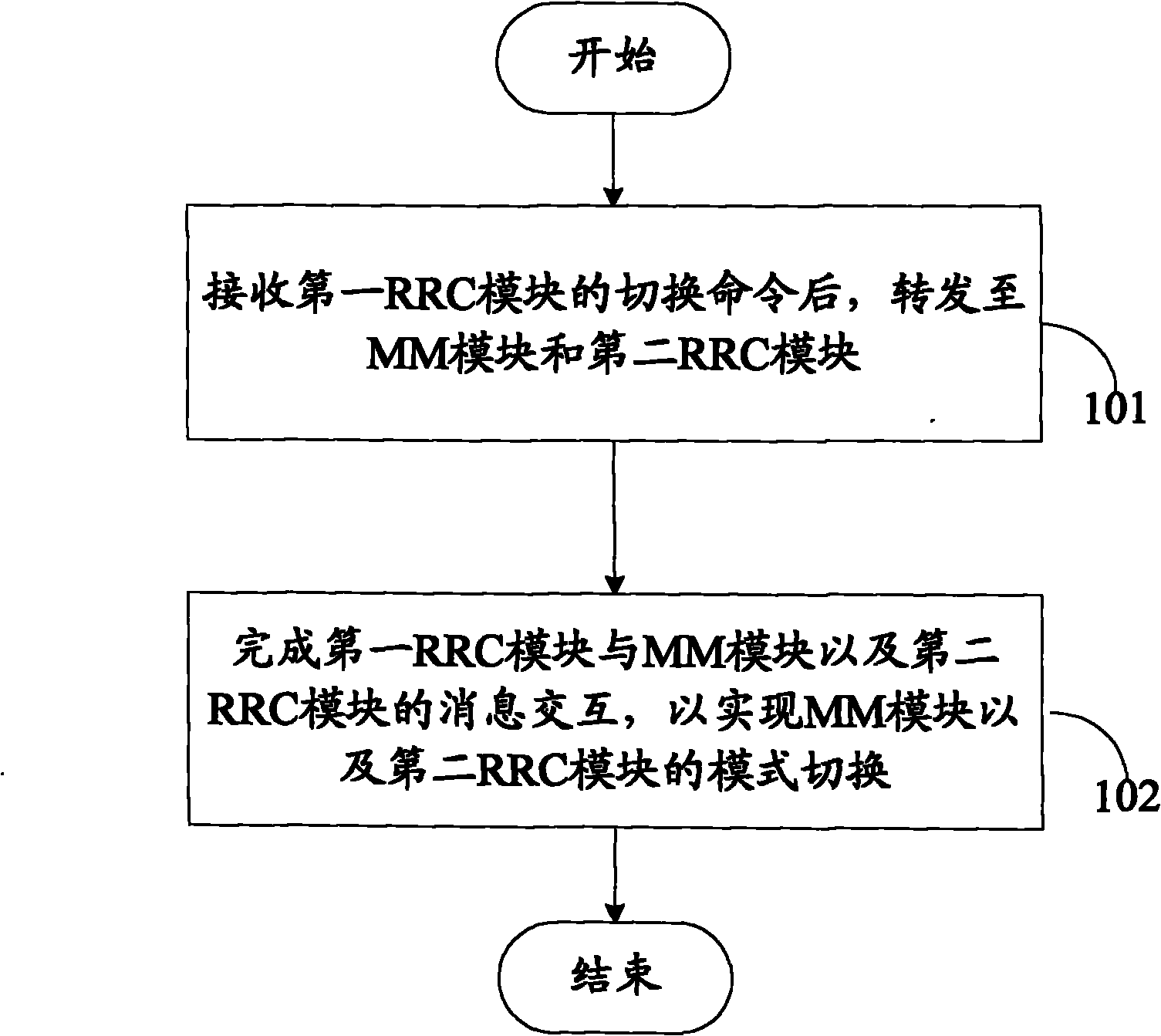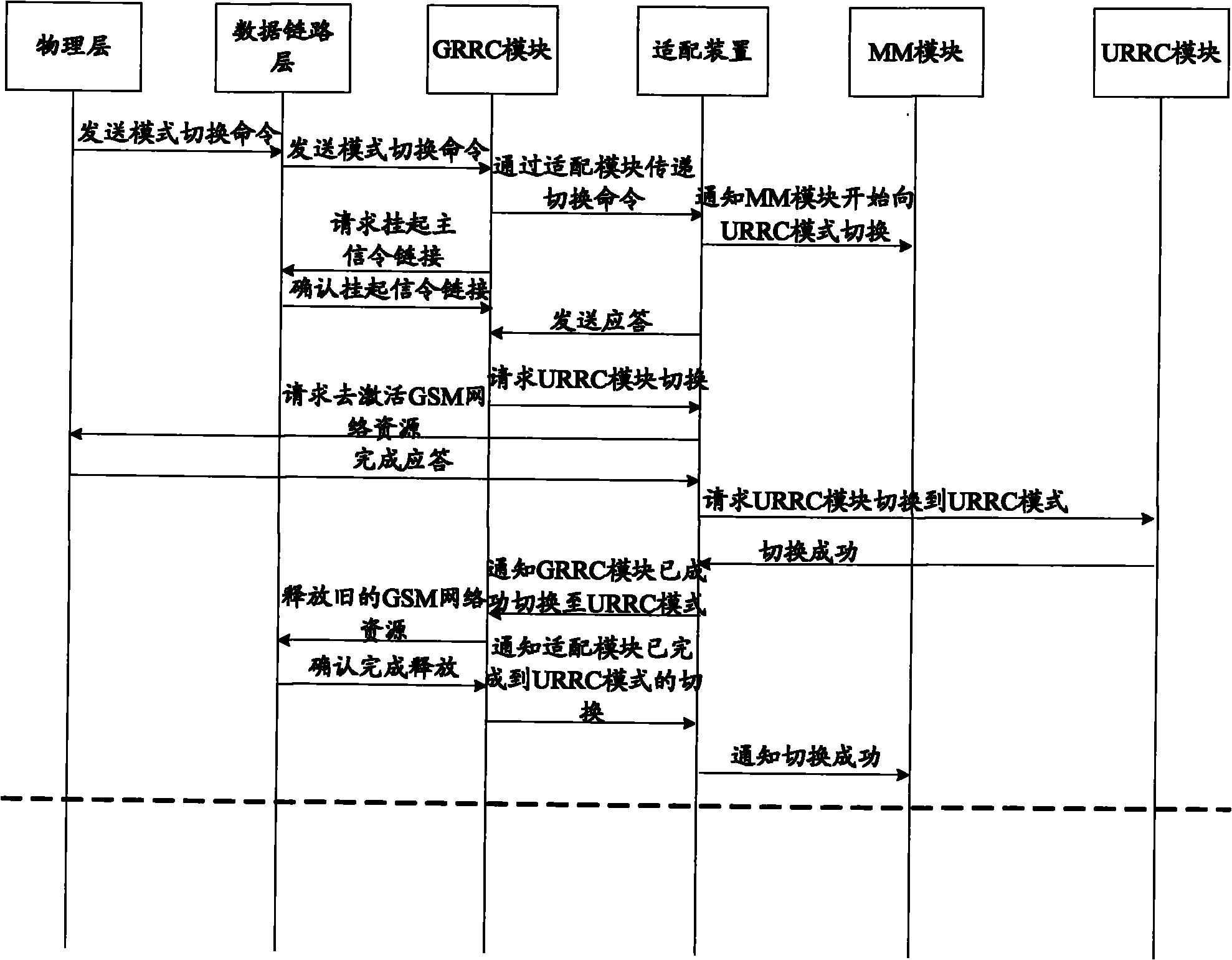Dual-mode switching method for mobile terminal, adapting device and mobile terminal
A mobile terminal and adaptation device technology, applied in the field of data communication, can solve problems such as unfavorable post-maintenance, and achieve the effect of facilitating post-maintenance and unified management
- Summary
- Abstract
- Description
- Claims
- Application Information
AI Technical Summary
Problems solved by technology
Method used
Image
Examples
Embodiment Construction
[0030] The present invention encapsulates the interface units of the GRRC module, the URRC module and the MM module together to form an independent adapter device, provides interface encapsulation for the message interaction of the above three modules, realizes unified management, and facilitates later maintenance.
[0031] refer to figure 2 , the method for dual-mode switching of a mobile terminal of the present invention is proposed, including:
[0032] Step 101, after receiving the switching command of the first RRC module, forward it to the MM module and the second RRC module;
[0033] In step 102, the message interaction between the first RRC module, the MM module and the second RRC module is completed, so as to realize the mode switching of the MM module and the second RRC module.
[0034] The above-mentioned first RRC module is a GRRC module, and the second RRC module is a URRC module, or the first RRC module is a URRC module, and the second RRC module is a GRRC modul...
PUM
 Login to View More
Login to View More Abstract
Description
Claims
Application Information
 Login to View More
Login to View More - Generate Ideas
- Intellectual Property
- Life Sciences
- Materials
- Tech Scout
- Unparalleled Data Quality
- Higher Quality Content
- 60% Fewer Hallucinations
Browse by: Latest US Patents, China's latest patents, Technical Efficacy Thesaurus, Application Domain, Technology Topic, Popular Technical Reports.
© 2025 PatSnap. All rights reserved.Legal|Privacy policy|Modern Slavery Act Transparency Statement|Sitemap|About US| Contact US: help@patsnap.com



